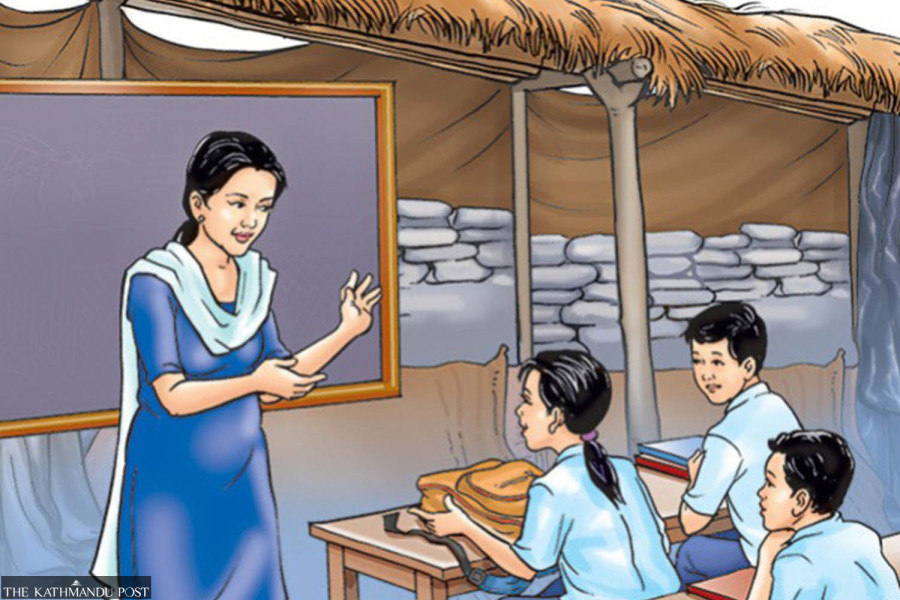Editorial
A tale of missing tutors
More efforts should be made to retain teachers in rural areas and discourage private tuition.
Whenever there is a discussion about rural development in Nepal, access to quality education always emerges as an obvious solution, yet its implementation has often been grossly neglected. This is evident in the fact that schools in Nepal’s rural areas have for years been grappling with a shortage of qualified teachers. A recent Post report highlights how the education of students in Araniko Technical Secondary School, Dasharath Secondary School, and Jananamuna Secondary School in Karnali Province have been compromised due to the lack of qualified teachers for basic and secondary-level science and maths students. Such issues occasionally make headlines; however, little has been done to minimise the education gap.
Although this is a problem in various provinces, Karnali’s community schools have suffered the most. Data from the education planning, data and research branch of the Social Development Ministry of Karnali Province shows that 626,010 students have enrolled in community schools in the province. However, of the 8,793 primary teacher positions, 644 are vacant. Further, in the lower secondary and secondary levels, 2,699 and 1,749 posts remain unfulfilled.
The rural municipalities in the neighbouring Sudurpaschim province seem to be handling the problem by hiring lower-level and underqualified teachers to teach secondary-level students. This only masks the problem as the teachers won’t be able to deliver what the subject demands. In most cases, there is a lack of science, maths, and English teachers. These are major subjects that demand proper lessons and shouldn’t be taught only for the sake of teaching. However, these schools have limited options as teachers qualified to teach science and maths opt for civil service and secure a government job as they do not see teaching in rural areas as a promising career. According to the Education Development and Coordination Unit, Myagdi, seven science teachers left teaching to join the civil service in 2022.
The problem stems from the government’s failure to realise that teacher availability is vital for improving education. There are little to no incentives for teachers in rural areas. Qualified teachers feel less secure in their contract-based jobs in rural areas and are compelled to move to the cities for better opportunities. Even if the teachers join contract-based positions in remote areas, they leave feeling demotivated and undervalued.
Seeing the poor teaching and learning conditions in rural schools, students migrate to get a better education. The lack of teachers has, in turn, led to the lack of students in some schools. According to the Ministry of Social Development, Karnali, there are fewer than 10 students in 137 community schools in the province. There is also a growing tendency among teachers to take tuition classes rather than teach in schools as they earn more from that. Due to the distrust of schools, parents in remote areas send their children to neighbouring towns and cities for tuition. This becomes more noticeable during the Secondary Education Examination. During this year’s SEE, over 500 grade 10 students across Bajhang were studying in tuition centres, leading to a lack of students in schools and the cancellation of classes.
With the inability of our education system to bridge the gap between rural and urban education, the poor SEE results should not be a surprise. The students mirror the teaching they get, just as teachers reflect the conditions they work under. So a change in existing policies for hiring teachers is warranted. More efforts should be made to retain qualified teachers in rural areas and discourage private tuition. We cannot expect better output from students unless they have good and enough teachers in their schools.




 9.12°C Kathmandu
9.12°C Kathmandu












%20(1).jpg&w=300&height=200)

